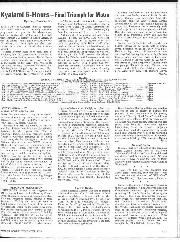
Cars in books, December 1974
Quite Sherlock Holmes' like feat of tracing a hit and run car after it had caused a fatal accident involving a horse-vehicle at the corner of Park Avenue and 69th…
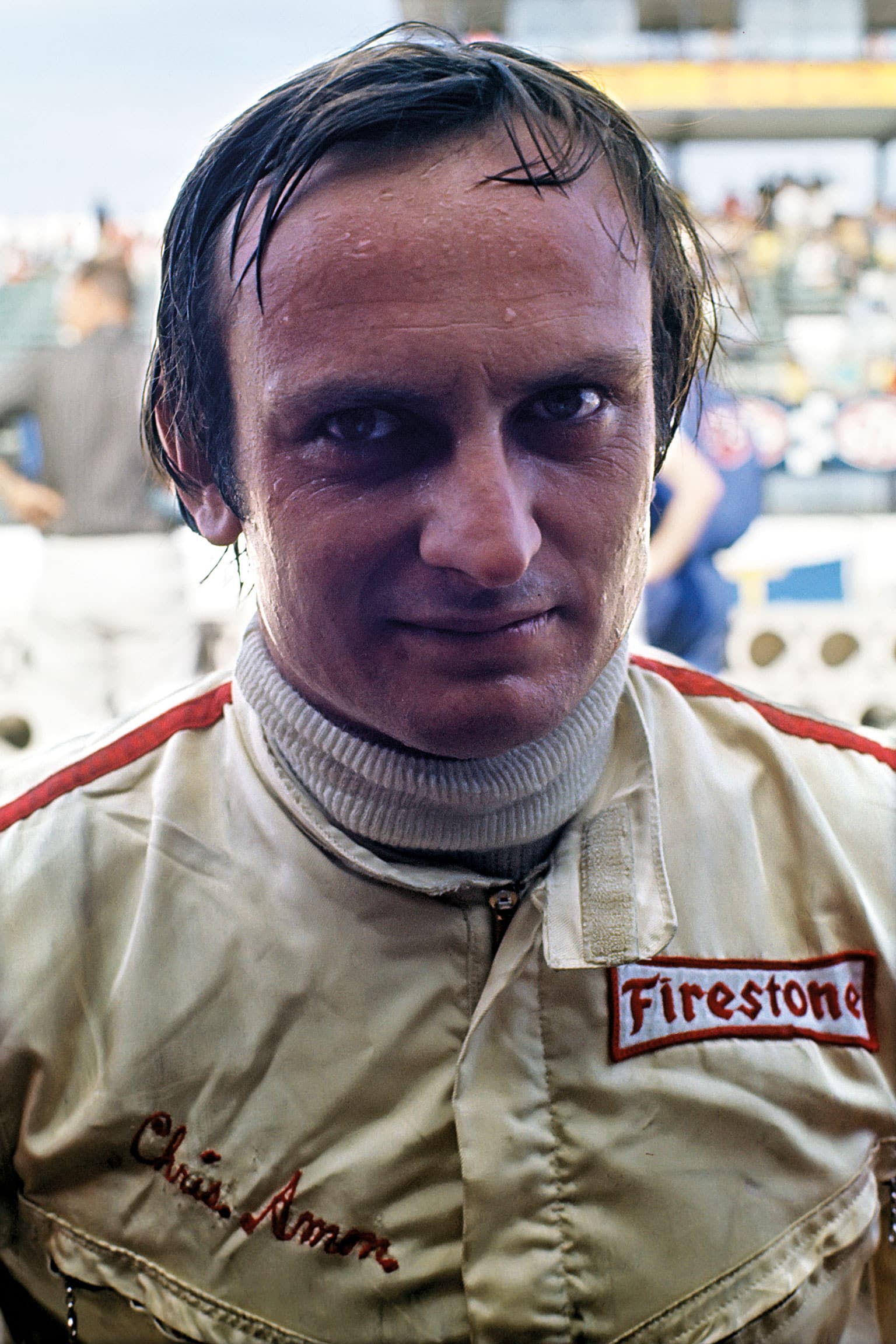
It was a chilly morning in early January 1971 when Alan Henry and I called on Chris Amon at his new engine business in Reading. It would be an unforgettable experience, not so much because AH and I learned anything interesting about motor racing (though we did) but because one day in the presence of the fascinating Mr Amon provided an insight into the man behind the racing driver. He would unwittingly confirm himself to be trusting, honest and decent, qualities which I fondly appreciated. We would also find him a little gullible but also lacking in deviousness, exactly as was demonstrated by events throughout his often topsy-turvy career. In just that one day, more than 50 years ago, I would discover that his famous talent for disorganisation had spilled over into his off-track life.
Some background here. Our interview was to be published in Motoring News, the weekly racing newspaper (and at the time Motor Sport stablemate) which employed the two of us. I had joined the full-time staff in the spring of 1968 to cover Formula 2 racing, only to find myself somewhat rashly promoted to the Formula 1 chair in April 1970. AH had quit his own career in banking to take over the F2 gig from me, so we were still both professionally innocent, albeit with a shared passion for the second formula. It was AH who had set up the Amon interview, but I pulled rank and insisted on joining him.
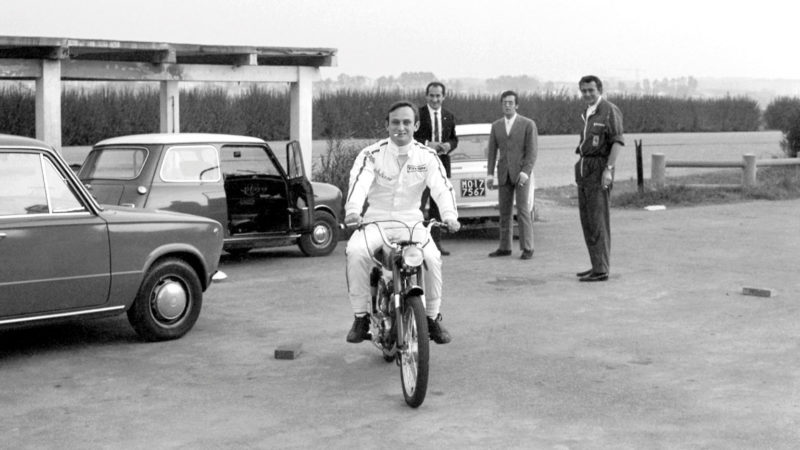
Chris Amon was Ferrari’s main driver for much of 1967 – when this photo was taken – after the death of team-mate Lorenzo Bandini and a horror crash for Mike Parkes at Spa in which he broke both legs
Amon was of particular interest to us because he had decided to invest some of his F1 earnings in an engine business under his own name, to build and maintain F2 units complying with the new-for-1972 Formula 2 – still a year away – now with a 2-litre limit. Although the premises he had chosen were crumbling and semi-derelict, he was reluctant to explain why he and his staff were working in this unheated semi-abandoned factory. Many years later Chris revealed that his 1970 season as the lead driver for the new March team had ended with him having to whistle for £75,000 of the £100,000 retainer promised to him by March founder Max Mosley. There was a whisper that the Reading factory was part of the Mosley family’s extensive property portfolio and had been offered to Chris in part-mitigation of the outstanding debt.
On arrival we were ushered into the proprietor’s office by a young woman in a fluffy angora sweater. Despite a couple of fan heaters, it was uncomfortably chilly. Chris explained that he was still settling in because he and his lady had only come back the previous day from a winter break in the Caribbean. It was his first day in charge.
He offered us hot drinks and gingerly pressed the intercom to summon another female assistant, also in an angora sweater. She disappeared while AH and I switched on our tape machines. Ten minutes later she returned to explain that there was no petty cash for the hot drinks dispenser, so one of the personal assistants would need to go to the bank.
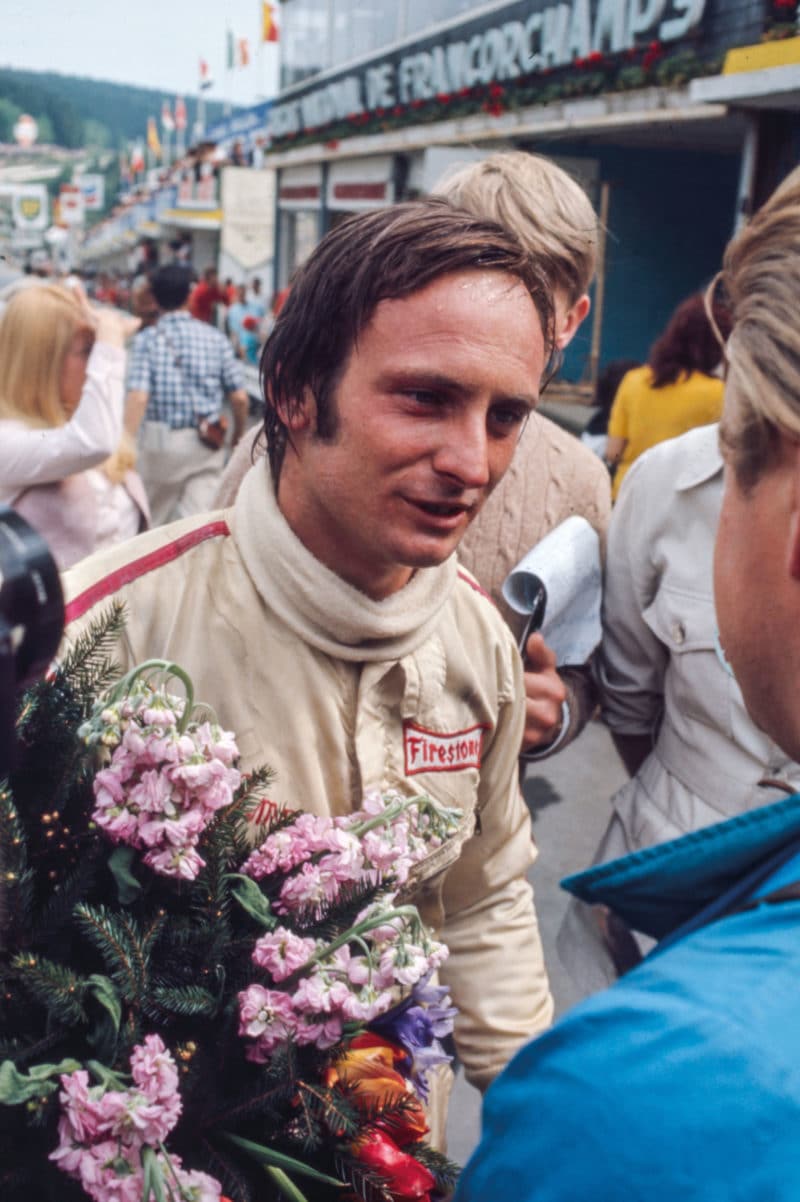
By 1970, Amon was driving for March alongside Jo Siffert.The New Zealander finished second here in the Belgian Grand Prix – working up a sweat in the process – and also set a new lap record
“Take my car,” said Chris, digging into his pocket for the keys to the unglamorous Simca-Chrysler which he was using since joining the F1 Matra team the previous year. We saw her set off kangaroo-style as she struggled with the unfamiliar clutch. Chris attempted to look relaxed about the proceedings. His breath hung gently in the freezing air of his executive office and we hacks felt glad we had not removed our winter jackets. By now it was beginning to snow quite heavily.
We attempted to resume the interview, but not for long because the intercom rang. “Please excuse me,” said Chris, “but I’ve been waiting for this call from France.” We removed ourselves from his office and sat outside in the lobby, but the office partitioning did not extend all the way to the ceiling and we could hear every word.
The man on the line was none other than Monsieur Matra himself, Jean-Luc Lagardère. Chris pleaded with his boss to do something to improve the power delivery of the Matra V12 and, above all, to reduce its thirst, which was a severe handicap against the British opposition’s more abstemious Cosworth V8s. Our man made it clear that he would willingly have sacrificed some of the French engine’s glorious soundtrack for a flatter torque curve. We guessed that this might not have been the first time Chris had raised the subject with the management.
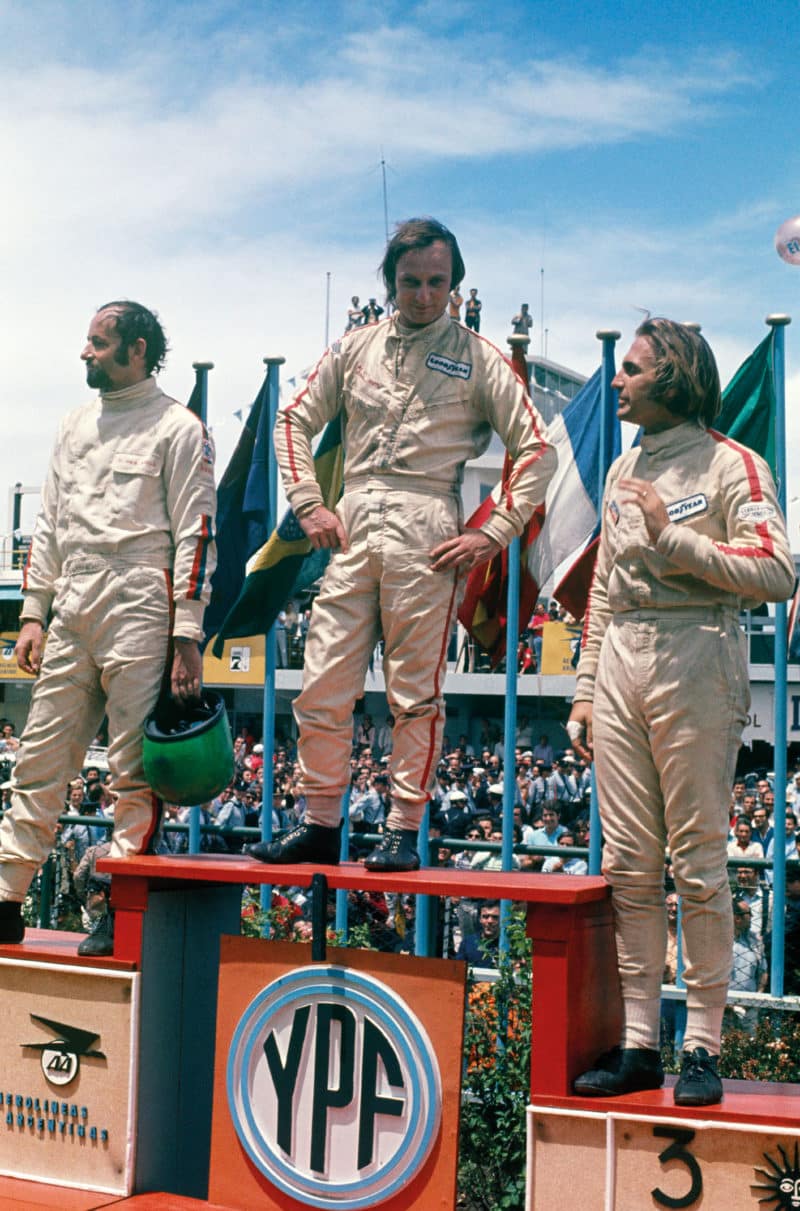
Amon finished first in the non-championship Argentine GP in 1971 – a feat he couldn’t equal in the world championship.
Back to the interview. We wanted to talk about the new F2 regulations, framed by the FIA in a vain attempt to reduce costs (sound familiar?) by specifying the use of a production cylinder block. The Amon engine, like many others that year, was to be based on the Ford BDA, a version of the long-established Cosworth FVA which had been ‘productionised’ for sale to the public in various hot Fords.
Chris was startlingly ignorant of any technical details involving the engines being assembled by the half-dozen employees in the workshop outside. He said we would be able to get more information from Aubrey Woods, the ex-BRM designer whom he had appointed as his technical director. Aubrey, alas, was not at work that day. Two pairs of eyebrows lifted slightly. “Oh,” Chris responded nervously, “I have quite a lot of faith in Aubrey.” There was a pause as the fateful words were scribbled into notebooks. I think the perceptive AH used them in the headline for his story.
Then one of the angora ladies dashed in to say that her colleague, returning from the bank with the petty cash, had crashed Chris’s car and put it on its roof. She was badly shaken but otherwise unhurt. We learned later that she had briskly turned off the main road, which had been gritted following the snowfall, and into the factory access road, which was still coated in snow. The car had slid into the kerb and flipped. It was not driveable and the emergency services were attending the scene.
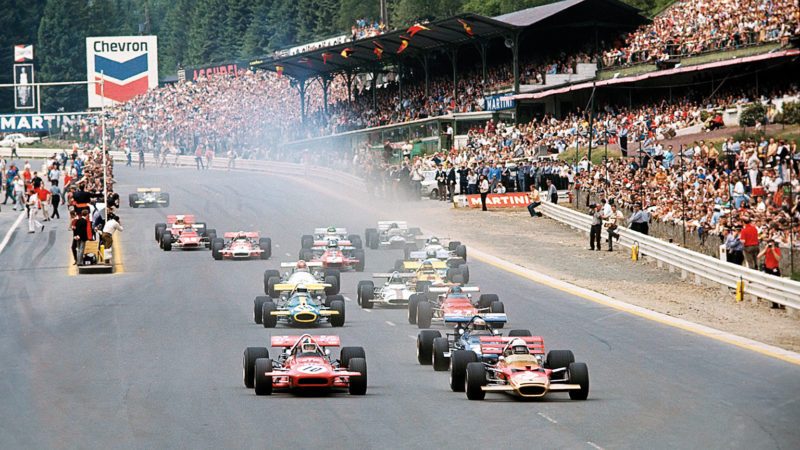
At Spa, 1970
While Chris coped with the crisis, someone was hurriedly delegated to give us a factory visit. There wasn’t much to see in the way of machinery and equipment. Essentially, the standard BDAs were to be ‘Amonised’ with uprated crankshafts and pistons, together with racier valve gear. Good ol’ Aubrey, respectful of the spirit of the FIA’s ‘production block’ regs, had given no thought to strengthening the block itself. Rival builders reinforced everything, in some cases by creating a pure racing engine which safely revved to limits that would destroy the standard ironmongery.
Who, we asked, had placed orders for the Amon BDA? Chris suggested we discuss the details with him over lunch at a nearby pub. There he admitted that so far the only firm customer was the Japanese privateer Tetsu Ikuzawa, who had impressed British fans in Formula 3. None of the factory teams, it seems, were interested.
We now had sufficient material for AH’s F2-themed piece, but I had some questions for Chris about his hopes in F1, specifically with Matra. I therefore instructed my junior to head back to base and get started on his article. Still seemingly unaware that most of my questions had already been answered by what I had overheard him telling Lagardère on the phone, Chris did his unconvincing best to be polite and positive about his French employer. As I prepared to take my leave of him, he remembered that he was now carless and asked me if I would give him a lift home.
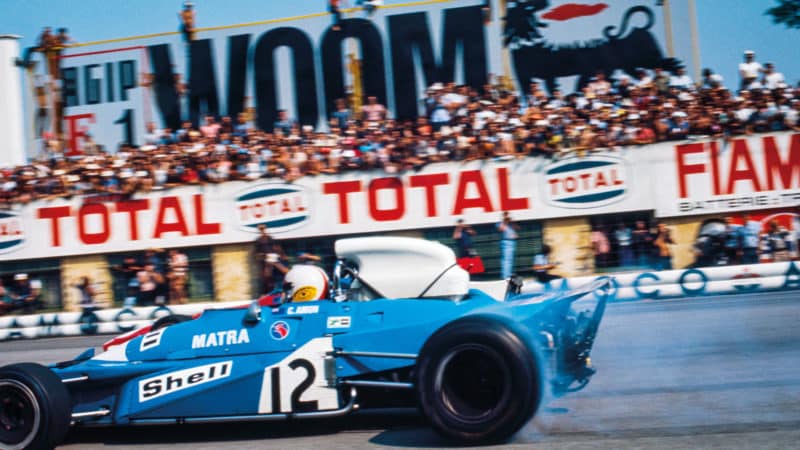
In the points – sixth – at Monza driving for Matra in the ear-shattering MS120B. Amon started from pole
I was certainly impressed when we got to his place, a mansion which he was renting in the Berkshire countryside. There were extensive gardens and a big staircase, but its most impressive feature was the heated indoor swimming pool. Unfortunately, on leaving for his holiday a couple of weeks earlier, instead of turning off the pool’s heating system, Chris had managed to turn it up to maximum. Not only was the house still full of steam but acres of wallpaper had come unstuck and slid down the walls.
I was introduced to Chris’s other half, who was not at all happy to hear about the fate of the Chrysler. The battery on her own Mini had gone flat while they were away and the two of them were now without any wheels at all, so Chris suggested I might be able to help out by giving the thing a tow-start. Chris found a length of rope, only to remember as we trotted out into the gathering January gloom that the Mini was one of only two or three in the country that had an automatic transmission… Please allow me here to tidy up some loose ends. Tetsu Ikuzawa would be the only F2 driver to adopt the Amon-modified BDA for 1972. He failed to qualify his GRD at Mallory Park for the first F2 event of the year in March and by the time he next appeared he was using an engine prepared by David Wood. As far as I can establish, the Japanese driver and his GRD used the Amon BDA only once before switching to alternative suppliers. There would be no more mention of Amon Engines, a company which had the inglorious record of being abandoned by its only customer before its engine ever saw a race start. The short-lived enterprise was quickly and discreetly sold to March, possibly at the behest of Mosley as an act of contrition. The association with Aubrey Woods had one intriguing consequence for Chris. Woods had previously assisted with the development of the often fragile 3-litre V12 which BRM used for almost 10 years in F1.
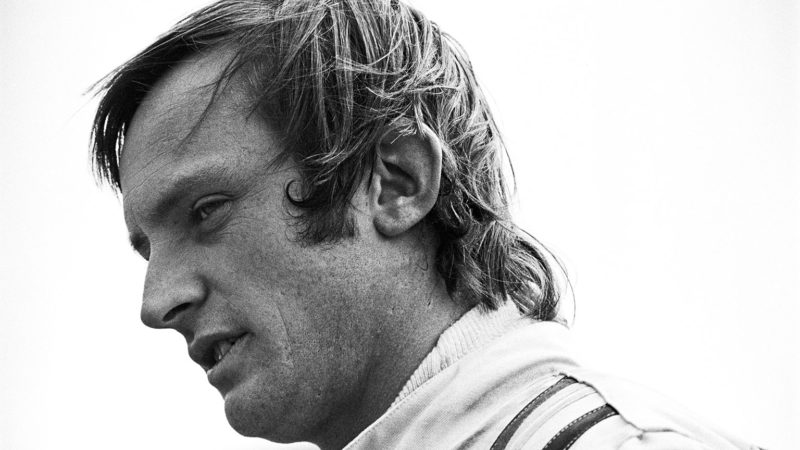
Was Amon’s lack of a Formula 1 win purely down to bad luck? In a twist to the tale, he would be named as the 13th best F1 driver
Woods had also been involved in the creation of an experimental one-off 3.3-litre version of the BRM V12, to be used in sports car racing. During his brief employment at Amon Engines, according to Chris, Woods hinted that the rogue oversize lump may even have found its way into the back of the BRM P153 which Pedro Rodríguez drove to an unexpected victory in the Belgian GP at Spa-Francorchamps in 1970, vanquishing Chris’s March-Cosworth 701 by a mere 1.1 seconds after a long and close-fought battle. Writing in these pages in May 2010, Doug Nye comprehensively refuted the ‘big engine’ calumny, producing irreproachable evidence from half a dozen expert witnesses to confirm that the race had been won with an honest 3-litre unit.
That race at Spa had been the first F1 event on which I reported for MN, and as a paddock newbie I found Chris comfortingly approachable. He was not always able to be complimentary about March and the far-fetched excuses that Mosley served up to him throughout 1970. It was therefore no surprise at the end of the season when he jumped ship for Matra. In January 1971 my MN duties had taken me to Buenos Aires where I saw him make his winning F1 debut with the screaming MS120B. Even now I like to claim that I am the only British journalist to have seen Chris win a grand prix, the Gran Premio de la Republica Argentina, although this was a two-heat non-championship event against weak opposition.
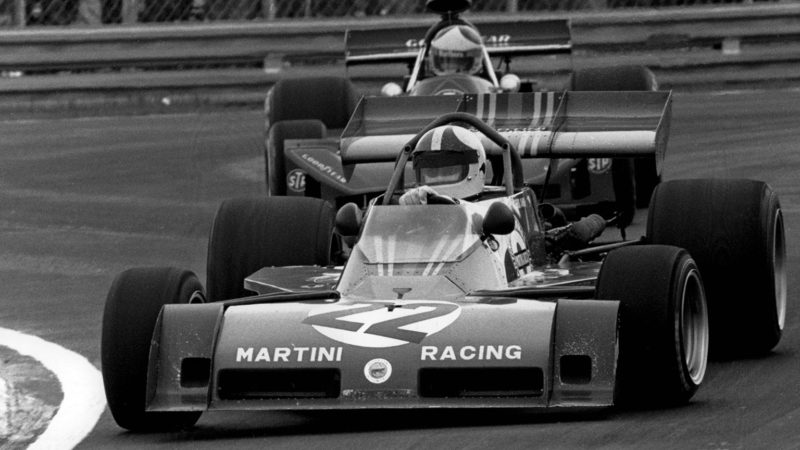
There would be only a single finish in the Martini Tecno PA123 in 1973 – a sixth place at the Belgian GP
There would be other connections with Chris. Perhaps the most bizarre of them was the evening when part of the suspension for one of his cars was designed in my basement flat in Islington. This would be the works Tecno F1 car (there were others), designed by Gordon Fowell and driven sporadically by Chris in 1973 when the mood took the wretched thing and its home-brewed flat-12. One evening, just after the pubs closed, Fowell had dropped in on me unannounced with a mutual racing friend who had seen me invest in a bottle of duty-free Scotch on a recent trip abroad. Fowell sat down at the dining table with his glass, promptly had a ‘light bulb’ moment of inspiration and pulled out his drafting tools to put his innovation on paper. The monocoque ‘Goral’ Tecno PA123 was the only car of that ill-fated marque ever to score a championship point, for sixth place in the Belgian GP at Zolder. Only three laps behind, too…
Chris’s enthusiasm for F1 diminished abruptly at the Nürburgring in 1976 when yet another wheel fell off his works Ensign and he decided that he did not want to be on the grid for the re-start after Niki Lauda’s fiery crash. After dabbling in Can-Am racing he went back to New Zealand to take over his father’s prosperous sheep farm and to start a family with wife Tish. Among many other things, he was subsequently employed by Toyota to advise on tuning the suspension of their road cars to suit local conditions. Having once driven an ‘Amonised’ Corolla across the South Island on the country’s typical half-metalled surfaces, I can confirm that he did a super job.

A shift to engine development was shortlived. It’s believed that only Tetsu Ikuzawa ever used an Amon-modified BDA, for his F2 GRD in 1972.
After deliberately staying away from F1 events for almost 27 years, in 2003 Chris was tempted back by his friends at Toyota, who brought him to Melbourne as a guest of the Toyota F1 team at the Australian GP. Over lunch in the paddock with various British hacks he rejected the old ‘unluckiest man in F1’ label with which he had been tagged for so long. He admitted he had made some unfortunate choices when switching teams in the ’60s, but the fact that he had survived into the ’70s, especially considering some of the deathtraps he had driven, marked him down as having been prodigiously lucky.
Nevertheless, I suggested to Toyota’s PR man, in view of the effect that his guest had had on the machinery back in his racing days, it was surely tempting fate to let Mr Amon anywhere near the garage. My cynical hunch proved to be correct on Sunday, when neither Toyota driver got much further than halfway to the finish: Cristiano da Matta spun off on lap seven and Olivier Panis retired on lap 31 with his car’s fuel system on the blink. It was Mario Andretti who once picturesquely scoffed that if Chris Amon had ever gone into the funeral business, people would stop dying. My late colleague Alan Henry was rather more subtle when assessing the Amon skills. In his 2008 book The Top 100 F1 Drivers of All Time, he listed Chris at number 13.
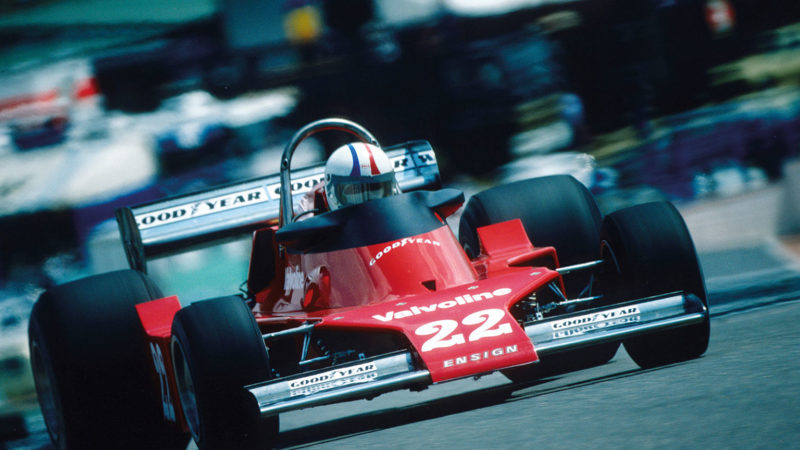
Amon’s final F1 points came at the Spanish GP in 1976 with Ensign